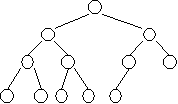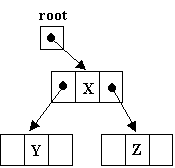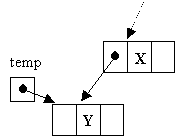
- path from node n1 to nk -- a sequence of nodes [n1, n2,.., nk]
- length of a path -- number of edges in the path
- depth (level) of a node -- length of the path from the root to the node
- height of a node -- length of the path from the node to the deepest node in the subtree rooted by that node
- height of a tree -- height of the root
- leaf node -- a node with no children
- internal node -- any node in a tree that is not a leaf




